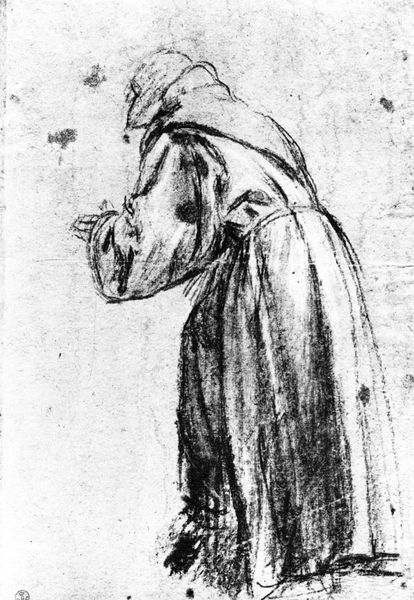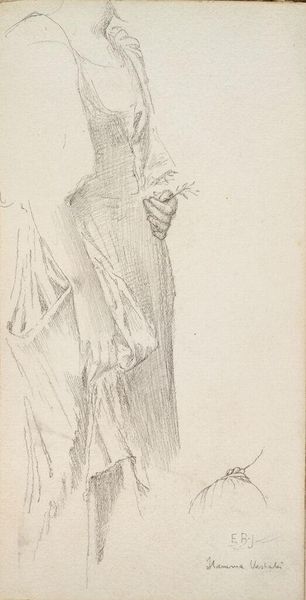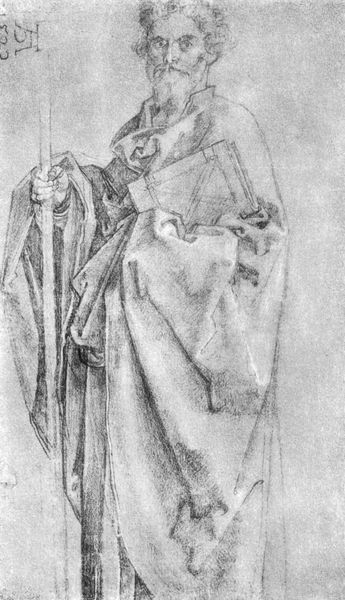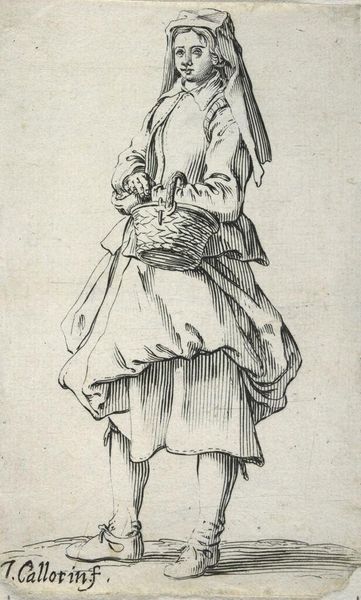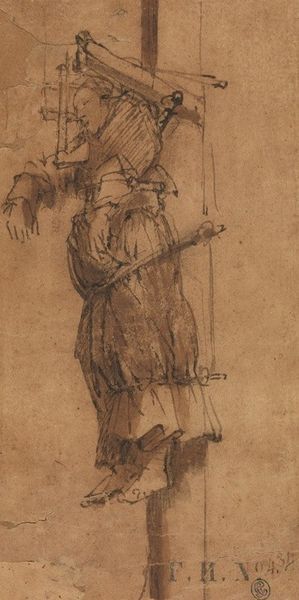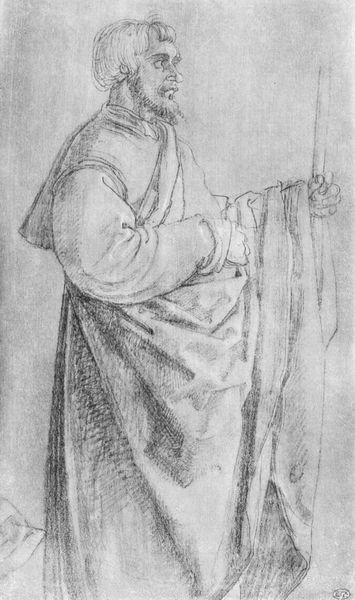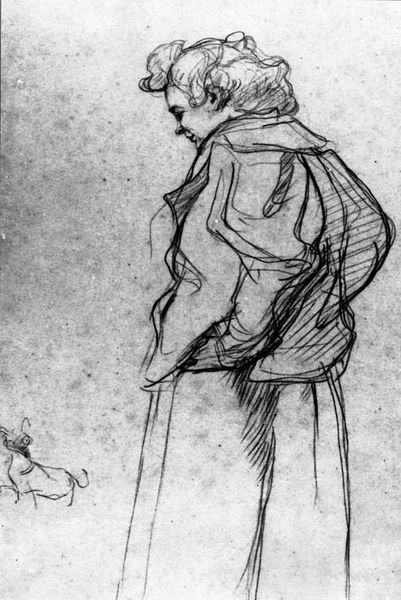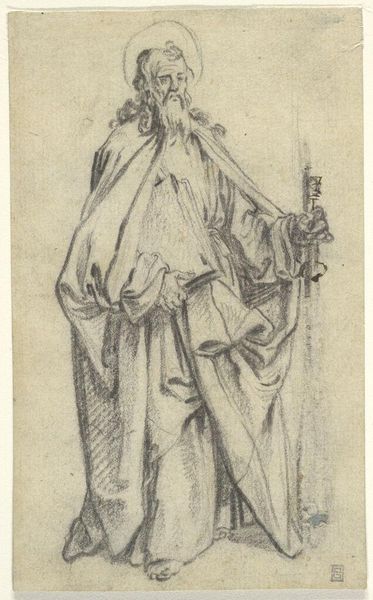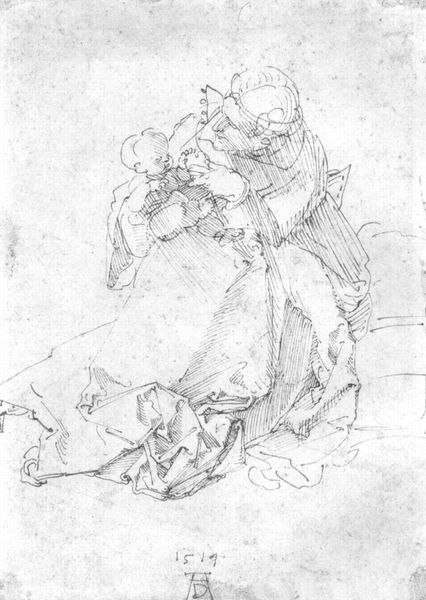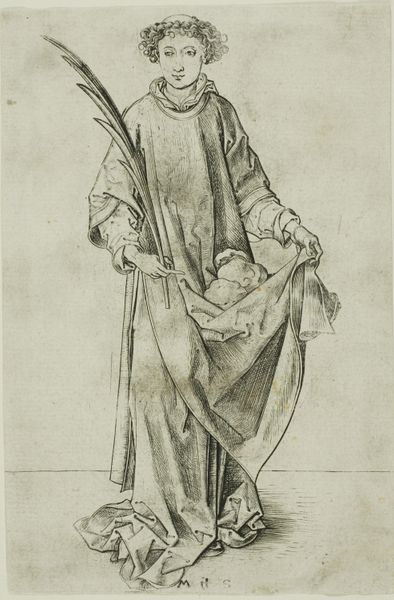
drawing, pencil
#
portrait
#
pencil drawn
#
drawing
#
medieval
#
pencil sketch
#
charcoal drawing
#
figuration
#
form
#
pencil drawing
#
pencil
#
christianity
#
costume
#
line
#
history-painting
#
northern-renaissance
Copyright: Public domain
Editor: This is Durer’s "St. Paul," a pencil drawing from 1514. It's stark, almost severe. He holds a sword and a book. What kind of story is Durer trying to tell here? Curator: A potent one, wouldn’t you agree? Consider the sword—a classic symbol, particularly for Paul. What does it typically represent? Editor: If I remember my Sunday school correctly, it's symbolic of his martyrdom, or more broadly, the power of the Word to cut through falsehood. Curator: Precisely. Now, the book, obviously connected to scripture. But notice how it's positioned, almost secondary to the sword in his grasp. Do you get a sense of conflict? Perhaps the internal struggles of faith being externalized in these attributes? Editor: It’s as though the artist implies St. Paul isn't just a passive receiver of scripture. He is an active fighter, ready to defend the message within the book. I had always thought of saints as peaceful people. Curator: And this challenges that very perception. Durer offers a dynamic saint, whose inner turmoil and unwavering conviction are visualized. He wields both the intellectual might of scripture and the readiness to defend its principles. Look closer; you’ll find the gaze unwavering, reinforcing the theme of unwavering conviction. What a demonstration of symbolic imagery! Editor: That makes so much more sense! I see how Durer is portraying St. Paul not just as a figure of faith, but also as someone grappling with conviction in a tumultuous world. It definitely gives the image much more emotional depth. Curator: Absolutely. We are drawn to explore that very visual intersection.
Comments
No comments
Be the first to comment and join the conversation on the ultimate creative platform.
